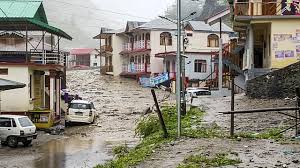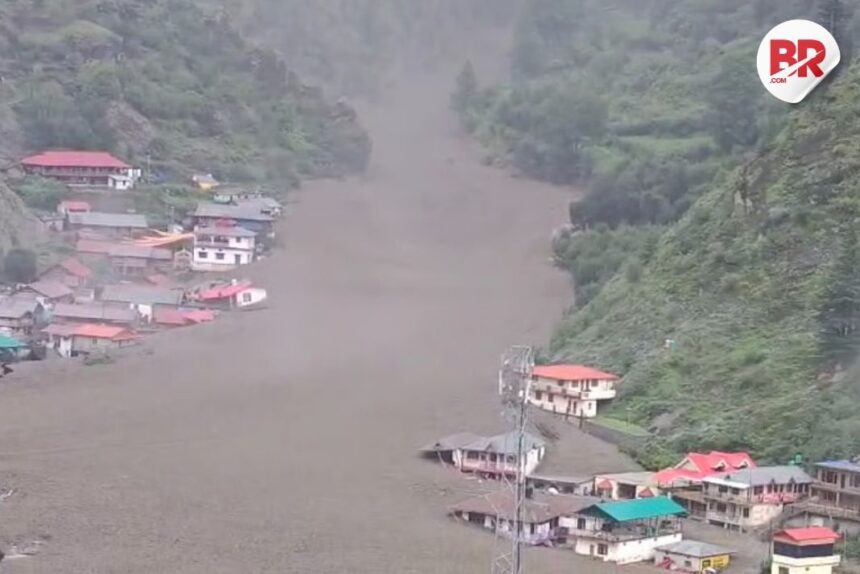In the small village of Dharali in Uttarkashi, floods are not a rare event — they are a part of life. Every year, when the Kheer Gad river floods, villagers climb to their rooftops, not for help, but to see what remains once the water leaves.

This river doesn’t give any warning. It doesn’t come with loud thunder or heavy rains. It just appears suddenly — filled with mud, rocks, and debris. Most of the year, it’s a peaceful stream. But when cloudbursts happen over Srikanth Parvat, it turns dangerous in minutes.
A Calendar of Disasters
People in Dharali don’t count years by festivals or holidays — they remember them by floods:
- 2010: The flood reached the school walls.
- 2012: A shop was swept away.
- 2018: Apple orchards were buried under huge rocks.
Still, until recently, no one had died in these disasters. Homes, shops, roads, and orchards were destroyed, but lives were spared.
A Village at Risk
Dharali is home to about 500 people. During the Char Dham yatra, thousands of tourists pass through, staying in local hotels and eating at roadside dhabas. But once the rains start in mid-July, the whole village starts watching the river closely.
The 2018 flood was one of the worst before the recent one. It happened in the early morning and destroyed about 20 homes and hotels. Apple orchards were buried, and the road to Gangotri was blocked with mud and broken pieces of buildings.
A Growing Pattern
Villagers have started to notice a pattern — the river floods more often and with more power. It doesn’t behave like a stream anymore, but more like a ticking bomb. Every year, the debris moves closer to the village center.
Kheer Gad may be a small stream, but it carries a lot of force. It starts from Srikanth Parvat and flows into the Bhagirathi river. When it floods, Dharali turns into a bowl, collecting all the water and mud.
Warnings Ignored
The area around Dharali has seen many disasters over the years:
- 1978: A dam broke and flooded nearby villages.
- 1984: A cloudburst turned farms into mudflats.
- 2003: A landslide buried homes in Uttarkashi.
Dharali escaped these events but was always close to danger.
In 2013, a government report clearly marked Dharali and nearby villages like Sukhi and Jhala as high-risk flood zones. But despite the warning, development continued:
- Hotels were built close to rivers.
- Roads were widened.
- Hills were cut to make space for tourists.
What the Experts Say
Experts warn that the situation is getting worse:
- Glaciers are melting faster.
- Rainfall patterns are changing.
- Cloudbursts are happening more frequently.
A geologist once said, “People think disasters happen suddenly, but the damage has been building up for years.”
Dharali is a beautiful but vulnerable village. As natural disasters increase and human activity continues to disturb the environment, the people here live with the constant fear of losing everything — again




